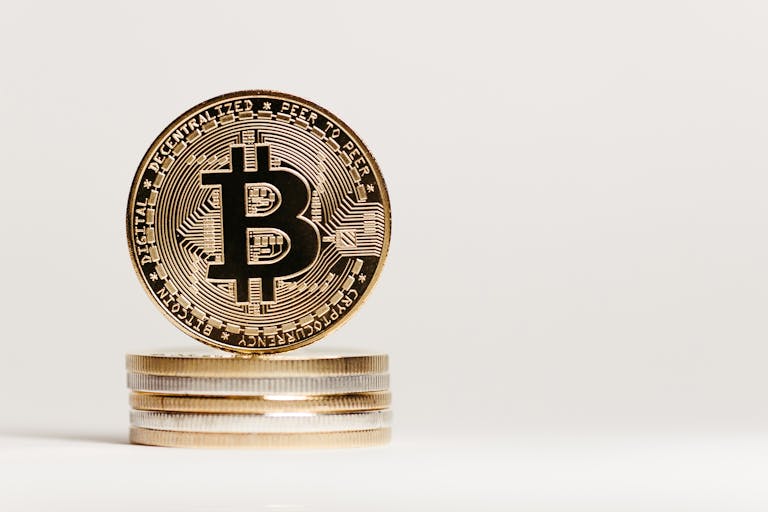How to Use Crypto for Micropayments: A Practical Guide for the Digital Age
In today’s digital economy, micropayments—small transactions typically ranging from a few cents to a couple of dollars—play a vital role in various industries, from content creation to gaming and online services.
However, traditional payment systems like credit cards or PayPal often struggle with micropayments due to high processing fees, which can make it economically unfeasible for both businesses and consumers.
Enter cryptocurrency, a revolutionary solution that promises to streamline these tiny transactions with lower costs, faster speeds, and greater accessibility. This article explores how to use crypto for micropayments, highlighting the steps, tools, and benefits, while also addressing challenges and future potential.
What Are Micropayments, and Why Cryptocurrency Fits the Bill
Micropayments are indispensable for industries where per-transaction value is minimal. For example, a reader might want to pay 5 cents for an article, or a gamer might pay a dollar for a virtual item. Yet, conventional systems charge fixed fees (often 2-3% or more), which can outweigh the payment itself.
Cryptocurrency offers a compelling alternative. By leveraging blockchain technology, it eliminates intermediaries, reduces fees, and enables near-instant transactions. While Bitcoin’s network can be slow and expensive for small payments, specialized coins, layer-2 solutions, and stablecoins have emerged to address these issues, making crypto an ideal platform for micropayments.
Choosing the Right Cryptocurrency for Micropayments
Not all cryptocurrencies are created equal when it comes to micropayments. Here are key considerations:
-
- Low Transaction Fees:
-
- Litecoin (LTC) or Bitcoin Cash (BCH): These coins are optimized for faster transactions and lower fees compared to Bitcoin.
-
- Ethereum (ETH): Though its gas fees can fluctuate, Ethereum’s scalability improvements (e.g., Layer 2 solutions like Polygon) make it suitable for micropayments.
-
- Stablecoins: Tokens like USDT (Tether) or USDC (USD Coin) offer price stability, reducing the risk of volatility when sending small amounts.
-
- Low Transaction Fees:
-
- Layer-2 Solutions:
For Bitcoin, the Lightning Network enables off-chain transactions, processing micropayments swiftly and cheaply. It’s akin to a second layer built on top of the blockchain, ideal for frequent, low-value transfers.
- Layer-2 Solutions:
-
- Specialized Coins:
Coins like Ripple (XRP) or Binance Coin (BNB) are designed for fast, low-cost transactions, often with fees under a cent.
- Specialized Coins:
Setting Up a Crypto Wallet for Micropayments
A secure crypto wallet is essential to store, send, and receive cryptocurrencies. Here’s how to choose one:
-
- Types of Wallets:
-
- Software Wallets: Easy to use (e.g., MetaMask, Trust Wallet for mobile).
-
- Hardware Wallets: Offer enhanced security for larger holdings (e.g., Ledger, Trezor).
-
- Mobile Wallets: Great for on-the-go transactions, like Coinbase Wallet or Binance Chain Wallet.
-
- Types of Wallets:
-
- Security Tips:
-
- Always back up your private keys.
-
- Enable two-factor authentication (2FA) for added protection.
-
- Use hardware wallets for long-term storage to safeguard against hacks.
-
- Security Tips:
Integrating Crypto Payment Processors
To accept or make micropayments, you may need intermediaries that simplify the process for businesses and users alike:
-
- Payment Gateways:
Platforms like BitPay, Coinbase Commerce, or CoinGate allow merchants to accept crypto payments seamlessly. They often convert crypto to fiat, mitigating volatility concerns.
- Payment Gateways:
-
- APIs and Plugins:
Developers can integrate crypto payment solutions into their apps or websites using APIs. For instance, Stripe now supports crypto payments for certain currencies.
- APIs and Plugins:
-
- Crypto Debit Cards:
Services like BitPay Card or Crypto.com Card let users spend crypto directly, bridging the gap between digital assets and everyday transactions.
- Crypto Debit Cards:
Real-World Applications of Crypto Micropayments
Cryptocurrency micropayments are already transforming industries:
-
- Content Creation: Platforms like Steemit or Mirror let users tip creators in crypto for articles, videos, or art.
-
- Streaming Services: Apps like Audius (music) or BitCherry (gaming) use crypto for per-song or per-minute payments.
-
- Gaming and Virtual Goods: Games like Axie Infinity or Decentraland utilize crypto for in-game purchases, assets, or experiences.
-
- Online Donations: Charities like BitGive accept small crypto donations, ensuring transparency and low overhead.
Challenges and Solutions
Despite its advantages, crypto micropayments face hurdles:
-
- Volatility:
The value of cryptocurrencies can fluctuate rapidly. To counteract this, stablecoins or custodial wallets that lock in fiat values are often used.
- Volatility:
-
- Adoption and Accessibility:
Not all users are familiar with crypto. Solutions like crypto debit cards or integrations with existing payment systems (e.g., PayPal accepting crypto) are helping bridge this gap.
- Adoption and Accessibility:
-
- Scalability:
Some blockchains struggle with high traffic. Layer-2 technologies (e.g., Lightning Network, Optimism) and newer blockchains (e.g., Solana, Cardano) are addressing this by processing thousands of transactions per second.
- Scalability:
The Future of Crypto Micropayments
As blockchain technology evolves, micropayments are becoming more viable. Innovations like zero-knowledge proofs, rollups, and central bank digital currencies (CBDCs) could further reduce costs and increase adoption. Additionally, Web3 and decentralized apps (dApps) are pioneering new models where users pay per use, from access to online content to viewing ads.
How to Make a Micropayment: A Step-by-Step Guide
-
- Select a Suitable Cryptocurrency: Choose a coin with low fees and fast confirmations (e.g., Litecoin, stablecoins).
-
- Set Up a Wallet: Install a mobile or software wallet, and fund it with your chosen cryptocurrency.
-
- Use a Payment Processor: For merchants, integrate a gateway like BitPay. For users, apply to platforms that accept crypto (e.g., Patreon, apps with crypto tipping).
-
- Send or Receive: Transfer the desired amount through the wallet, ensuring the recipient has a compatible address.
Conclusion
Cryptocurrency is reshaping the micropayment landscape by offering a cheaper, faster, and more transparent alternative to traditional systems. While challenges like volatility and adoption persist, the rise of stablecoins, layer-2 solutions, and user-friendly platforms is making crypto micropayments increasingly practical. Whether you’re a content creator seeking direct support or a consumer looking to pay for digital content, crypto provides a promising avenue for frictionless transactions in the modern economy. As the technology matures, its role in enabling microtransactions will only grow, unlocking new possibilities for creators, businesses, and users worldwide.







